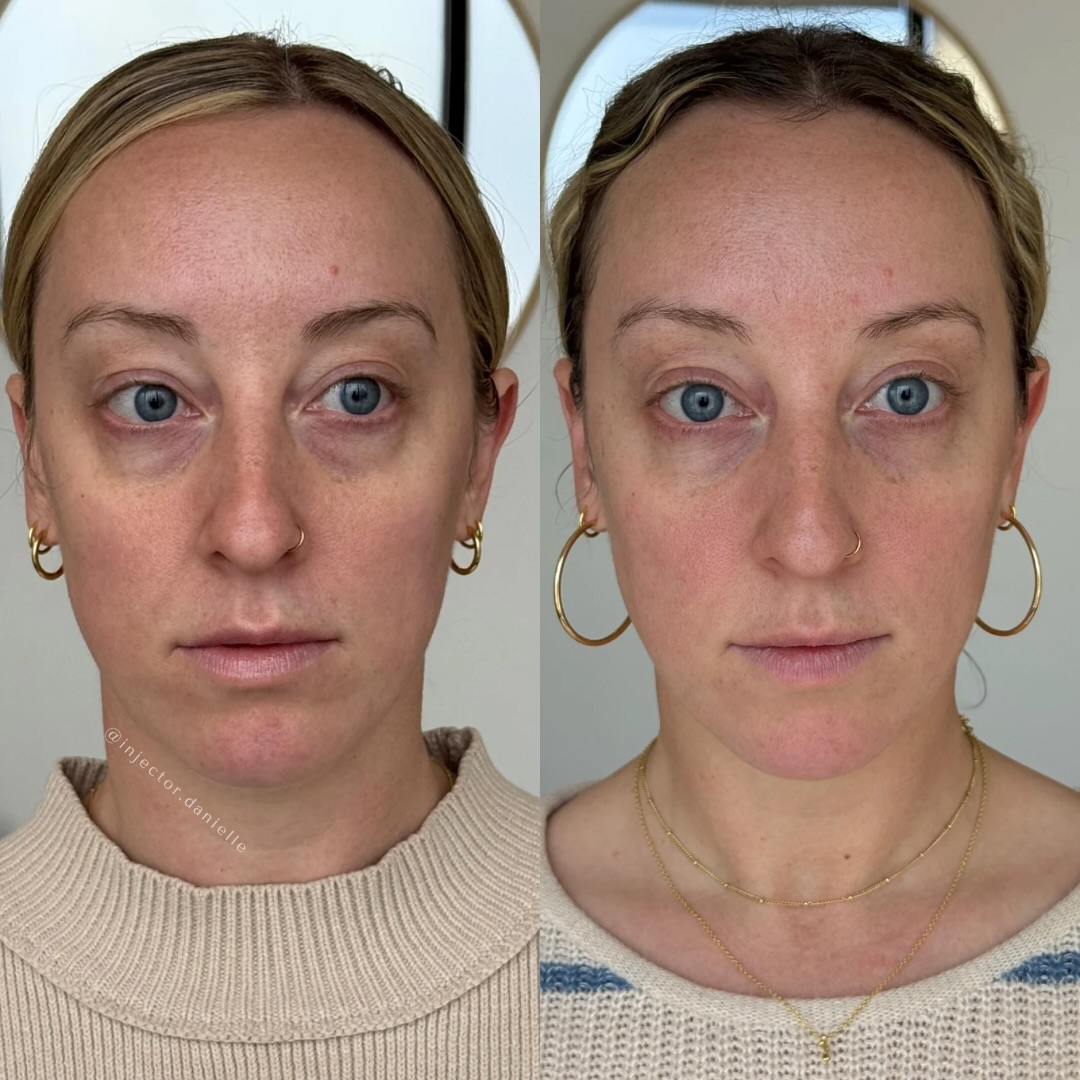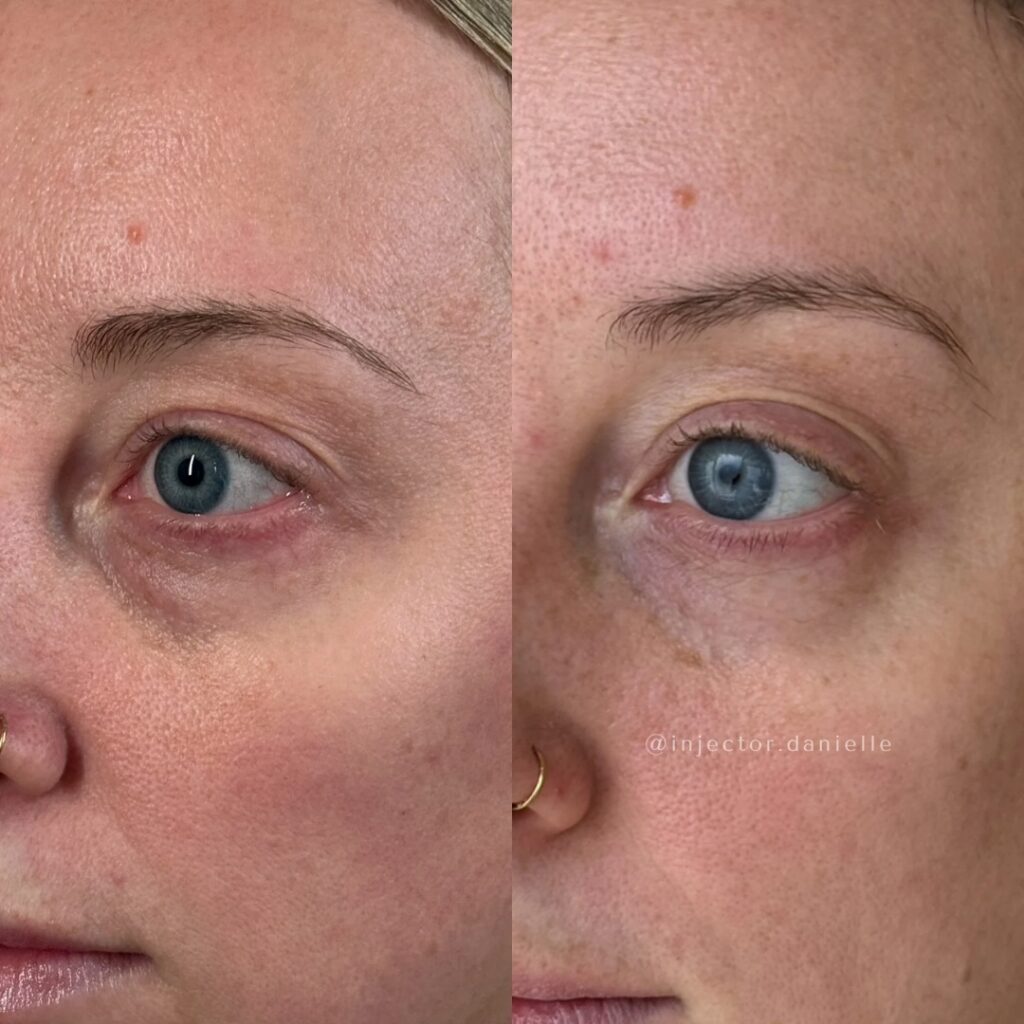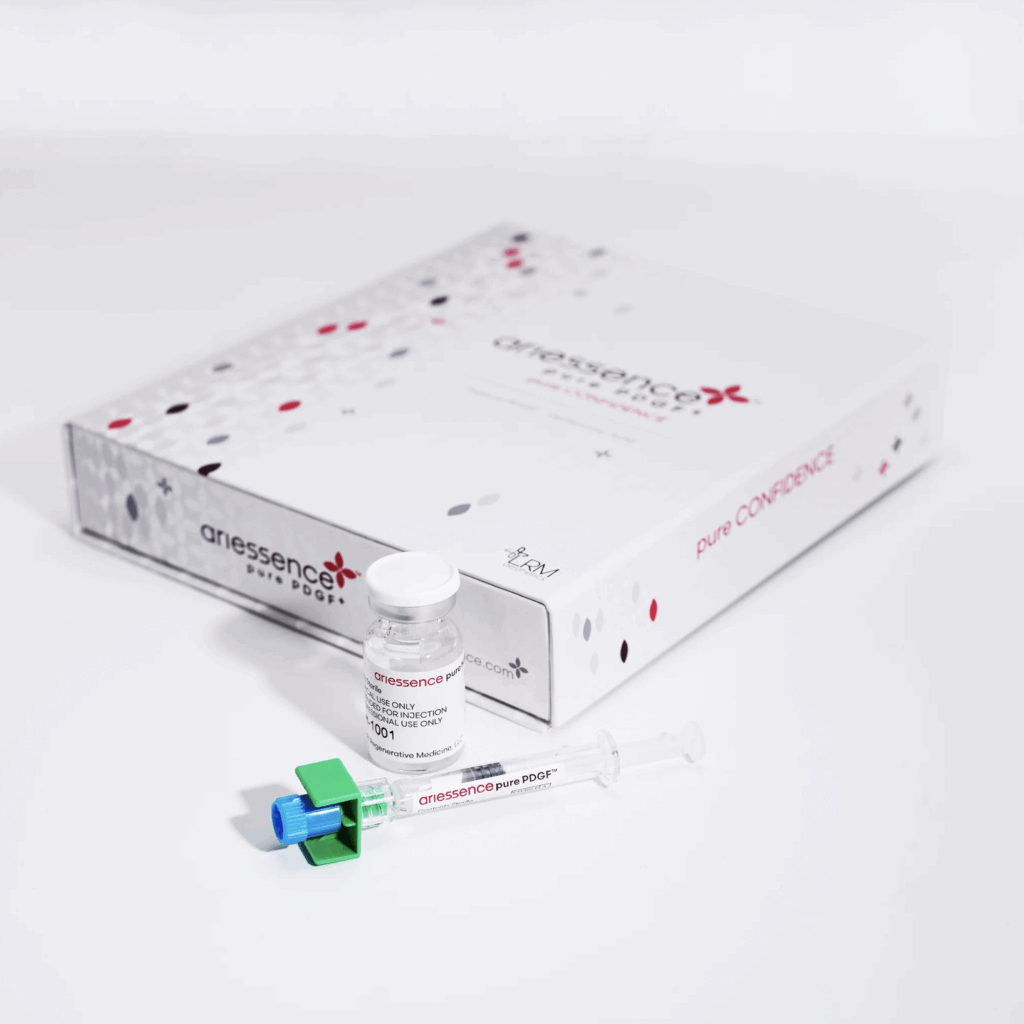PDGF: The Future of Under-Eye Rejuvenation
The under-eye area is one of the first places where signs of aging start showing up. Whether it’s the occasional dark circle that sticks around too long, pesky fine lines, or that subtle hollowness that wasn’t there a year ago (or was)… changes in this delicate area can throw off the entire face. You might feel you look tired when you’re not. Or older than you feel.
For a long time, the fix was undereye filler. When done right, dermal filler can camouflage undereye hollows and brighten up the area almost instantly. But the keyword here is camouflage. Under-eye filler doesn’t treat the root cause of signs of aging. And even with the best technique, filler doesn’t always behave predictably in this part of the face. The skin is thin, delicate, and more prone to showing puffiness or irregularity.
That’s where undereye natural rejuvenation treatments come in – and specifically, where PDGF is starting to change the game. Let’s get into it!

What is PDGF and why is it gaining popularity?
PDGF stands for Platelet-Derived Growth Factor. It’s a lab-engineered protein that plays a key role in wound healing and tissue regeneration. Naturally found in the body’s platelets within the blood, PDGF activates fibroblasts (the cells responsible for making collagen and elastin), promotes new blood vessel formation, and helps skin repair itself.
In aesthetics, we now have access to a pharmaceutical-grade version of PDGF through a product called Ariessence Pure PDGF+. This topical serum is created using recombinant DNA technology and is completely sterile, free from human or animal components. This synthetic PDGF is also incredibly potent – containing anywhere from 1,000 to 300,000 times more growth factors than what’s found in traditional platelet rich fibrin (PRF) or platelet-rich plasma (PRP). A little note: the variability in potency is a result of the patient’s growth factor component, not from the PDGF as this maintains a consistent amount of growth factors per vial.
Is it safe to use?
While Ariessence PDGF is listed with the FDA as a cosmetic product and doesn’t require formal approval, the PDGF component that it contains is also present in four FDA-approved products used in orthopedics, periodontics, and wound care with original FDA-approvals. These PDGF medications have a long-standing record of safety (over 15 years of use) and are now making their way into the world of regenerative aesthetics via topical application post treatments such as microneedling as well as different laser therapies.
Bottom line?
PDGF helps the skin rebuild itself via collagen stimulation, similar to how PRF or PRP would work, but is more potent. With zero blood draw and quick treatment application, it’s quickly becoming the go-to option for under-eye and general skin rejuvenation that actually strengthens the skin via your body’s own process rather than simply covering up the problem.
How PDGF Works Beneath the Surface
The power of PDGF begins below the surface, right where your skin needs support most. Once it reaches the subdermal tissues, it acts as a messenger – signaling your cells to get to work. It specifically targets fibroblasts (the cells responsible for collagen production), stimulates endothelial cells to support new blood vessel growth (great for tissue oxygenation), and promotes hyaluronic acid production to enhance hydration.
PDGF helps your skin rejuvenate itself from within – and that, we believe, is the future of aesthetics. As your own cells begin to heal and rebuild, you may notice skin that once sagged becoming firmer, dark circles beginning to fade, and a gentle return of volume that makes it feel like you’ve turned back the clock.
Because it’s bioidentical (chemically identical to what your body naturally produces), PDGF is very well tolerated, which is especially important when treating delicate areas like the under-eye.
Topical vs. Injectable: How Is PDGF Used?
Right now, PDGF is most often applied topically—especially as an add-on after skin-rejuvenating treatments like microneedling or Moxi laser. Both procedures create controlled disruptions in the skin barrier, allowing active ingredients to sink deeper into the dermis, where they can actually make a difference.
Microneedling opens microchannels through the epidermis and into the dermis, giving PDGF a direct line to the cells responsible for rebuilding. With lasers like Moxi, we’re resurfacing the skin—so following with a growth factor serum helps support that healing process and enhance the results.
That said, some providers are starting to explore a more direct route: injecting PDGF under the skin, particularly in the under-eye area. The technique is similar to how PRF or filler is delivered—using a cannula or a fine needle to place the serum right where it’s needed.
While early feedback on injectable PDGF is promising, the method is still fairly new. Because of that, most clinics offer it selectively, based on individual needs.

PDGF vs. PRF: What’s the Difference?
PRF, PRP, PDGF… we get it. The acronyms can start to blur together fast. But the difference between them is actually pretty simple: one comes straight from your bloodstream, the other comes prepped and ready in a sterile vial.
PRF (Platelet-Rich Fibrin) is a treatment that requires a blood draw. Your provider spins the blood down to isolate a mix of growth factors, then injects it into areas needing repair or rejuvenation. Sounds great in theory—but in practice, it can be a bit unpredictable. Your hydration, sleep, stress levels, and general health all affect the quality of your PRF. In short: it’s only as good as the day your body’s having.
PDGF, on the other hand, doesn’t rely on your biology. It’s one specific growth factor—Platelet-Derived Growth Factor—engineered in a lab to be ultra-concentrated and highly bioavailable. That means every drop delivers a consistent, therapeutic dose designed to activate your fibroblasts and kickstart collagen production.
We’re big fans of both treatments, and we use them all the time. But for those who want reliable potency without the needle poke (or blood draw), PDGF has quickly become a go-to.
How Many Treatments Are Needed?
PDGF isn’t a quick fix. Just like Sculptra, another regeneration treatment that uses your own body’s cells, PDGF is a long game—but one that pays off if you give it time.
Most people need between one and three treatments, spaced roughly 12 weeks apart. Some notice improvement after a single session—smoother skin, less shadowing—but real structural changes take a few months to fully show up.
Results build gradually over 3 to 6 months as your body lays down fresh collagen and elastin. So don’t expect a dramatic change overnight. What you’ll notice instead is a slow, steady return of firmness and tone and a visible softening of dark circles. The goal is to wake up in the morning, weeks from your treatment, and see a refreshed reflection in the mirror.
For maintenance? A single treatment once or twice a year can help lock in those results long-term.
What about side effects and downtime?
One of the reasons people love PDGF is that there’s barely any downtime—especially when it’s used topically. After a microneedling or laser treatment, the addition of PDGF can actually reduce redness and irritation. You might leave the clinic with a flushed glow, but it tends to settle quickly.
If it’s injected, the experience is still pretty low-key. There might be some puffiness or mild swelling in the under-eye area for a few days. Bruising is rare, but not impossible. Some of our patients do find the under-eye injections slightly uncomfortable, but we numb the skin and try to keep it brief.
How Long Will PDGF Results Last?
Once your skin starts producing new collagen and elastin, the results tend to stick around—usually anywhere from 9 to 12 months, sometimes even longer.
That said, things like age, lifestyle, and how well you take care of your skin all play a role. What makes PDGF different is that it helps your skin work better, not just look better for a while. So instead of temporarily hiding signs of aging, it actually helps slow them down.
How Much Does PDGF Cost?
The cost of PDGF treatment varies depending on how it’s used. On average:
- A single vial of Ariessence PDGF+ costs between $500 and $900 per treatment
- Injectable treatments may include additional fees for precision delivery and clinical time
At The LuxeRoom, we build personalized treatment plans based on your skin goals and budget. For best results, we may recommend combining PDGF with microneedling or Moxi laser as part of a comprehensive under-eye rejuvenation plan. We also offer package pricing—and make sure to keep an eye on our monthly specials for PDGF offers.

Under-Eye Rejuvenation With PDGF FAQs
Does PDGF help with under-eye wrinkles?
Yes—any rejuvenating treatment that regenerates skin from within will have a positive impact on under eye wrinkles . PDGF helps strengthen and smooth the skin over time by boosting collagen, which can reduce the look of fine lines and crepey texture. If you’re after dramatic, instant results, Botox or filler might be a better match. But if you’re playing the long game for naturally healthy and resilient skin, PDGF delivers.
Can it help with puffiness?
In some cases, yes. If your puffiness is related to poor circulation or fluid retention, PDGF may help by supporting better lymphatic drainage and microvascular health. But if you’re dealing with fat pads or under-eye bags, you’ll likely need a different kind of treatment.
What about dark circles?
PDGF can make a visible difference—especially if your dark circles are due to thin skin or sluggish blood flow. It works by improving skin density and encouraging new vessel formation, which can brighten and even out the area. If the darkness is more pigment-based or hereditary, though, results may be more modest.
How long does it take to see results?
You might start noticing subtle improvements around the 4–6 week mark, with full results continuing to build for 3–6 months. It’s not a quick turnaround—but the long-term payoff is stronger, smoother skin that actually acts younger.
Should you get Ariessence PDGF?
If you’ve been hesitant about filler, but still want to do something about tired-looking under-eyes, Ariessence Pure PDGF is worth considering. It doesn’t promise a quick fix, but it does promise rejuvenated skin, and that’s usually more resilient, brighter, and stronger from the inside out.
At The Luxe Room, we’re all about treatments that work—not just ones that trend. We’ve tested it: PDGF is one of those rare tools that combines medical-grade science with subtle, natural results.
Curious whether PDGF is the right fit for you? Book a consultation and we’ll walk you through everything—from treatment options to timing—so you can decide what’s next for your skin.



